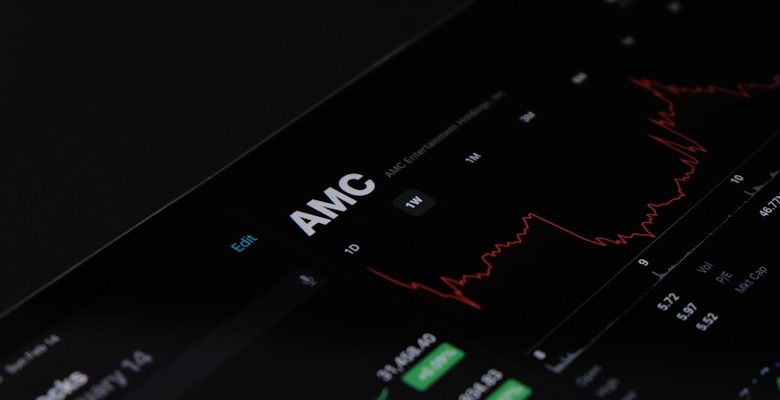The Impact of MiCA on European Crypto Markets

- Introduction to MiCA and its objectives
- Key provisions of MiCA and their implications for crypto markets
- Challenges faced by European crypto businesses under MiCA
- Comparison of MiCA with existing regulatory frameworks
- Potential benefits of MiCA for investors and consumers
- The future outlook for European crypto markets under MiCA
Introduction to MiCA and its objectives
The Markets in Crypto-Assets Regulation (MiCA) is a new regulatory framework proposed by the European Commission to govern the crypto markets in the European Union. MiCA aims to establish a harmonized regulatory framework for crypto assets, including cryptocurrencies, stablecoins, and utility tokens. The main objectives of MiCA are to provide legal certainty, investor protection, and market integrity in the rapidly evolving crypto space.
MiCA seeks to create a level playing field for crypto asset service providers and issuers across the EU by setting common rules and standards. By introducing a comprehensive regulatory framework, MiCA aims to enhance transparency, reduce regulatory arbitrage, and foster innovation in the crypto markets. The regulation also aims to address the risks associated with money laundering, terrorist financing, and other illicit activities in the crypto space.
Furthermore, MiCA aims to promote the development of a competitive and innovative crypto market in Europe by ensuring a high standard of consumer protection and market integrity. The regulation also seeks to facilitate the issuance and trading of crypto assets while safeguarding the stability and integrity of the financial system. Overall, MiCA aims to create a regulatory environment that fosters innovation and growth in the European crypto markets, while also ensuring the protection of investors and consumers.
Key provisions of MiCA and their implications for crypto markets
The Markets in Crypto-Assets Regulation (MiCA) introduces key provisions that will have significant implications for crypto markets in Europe. One of the main provisions is the establishment of a comprehensive regulatory framework for crypto-assets, which aims to bring clarity and transparency to the market. This will help to boost investor confidence and pave the way for mainstream adoption of cryptocurrencies.
Another important provision of MiCA is the requirement for issuers of crypto-assets to adhere to strict disclosure and transparency standards. This will ensure that investors have access to accurate and reliable information about the assets they are investing in, reducing the risk of fraud and market manipulation. Additionally, MiCA will introduce rules to protect investors and consumers, such as requiring crypto-asset service providers to obtain authorization from regulatory authorities.
Furthermore, MiCA will set out rules for the operation of crypto-asset exchanges and trading platforms, including requirements for the segregation of client assets and the implementation of robust cybersecurity measures. This will help to mitigate the risk of hacking and security breaches, creating a safer environment for traders and investors. Overall, the key provisions of MiCA are aimed at promoting the growth and stability of the crypto market in Europe, while also protecting the interests of investors and consumers.
Challenges faced by European crypto businesses under MiCA
European crypto businesses are facing a multitude of challenges under the Markets in Crypto-Assets Regulation (MiCA). One of the main obstacles for these businesses is the stringent regulatory requirements imposed by MiCA, which can result in increased compliance costs and administrative burdens. Additionally, the lack of clarity and consistency in the interpretation of MiCA across different European countries can create further hurdles for crypto businesses operating in multiple jurisdictions.
Furthermore, the broad scope of MiCA, which covers a wide range of crypto-assets and activities, can make it difficult for businesses to navigate the regulatory landscape and ensure compliance. This complexity may deter new entrants from entering the market and hinder the growth of existing crypto businesses. Moreover, the proposed requirements for licensing and authorization under MiCA could pose significant barriers to entry for smaller crypto businesses, limiting competition and innovation in the sector.
In addition to regulatory challenges, European crypto businesses may also face issues related to data protection and cybersecurity under MiCA. The regulation includes provisions related to the protection of personal data and the security of IT systems, which can be particularly challenging for crypto businesses that handle sensitive information and operate online platforms. Ensuring compliance with these requirements may require significant investments in technology and expertise, putting additional strain on businesses’ resources.
Overall, the challenges faced by European crypto businesses under MiCA highlight the need for clear and consistent regulation that balances consumer protection with innovation and growth in the crypto market. Finding the right regulatory approach that addresses these concerns will be crucial for fostering a competitive and thriving crypto ecosystem in Europe.
Comparison of MiCA with existing regulatory frameworks
When comparing the Markets in Crypto Assets Regulation (MiCA) with existing regulatory frameworks, it is evident that MiCA introduces comprehensive rules for the cryptocurrency market. Unlike previous regulations that were fragmented and varied across European countries, MiCA aims to harmonize the regulatory landscape for crypto assets throughout the European Union.
One key aspect where MiCA stands out is in providing legal certainty and clarity for market participants. By setting clear definitions and classifications for different types of crypto assets, MiCA helps to eliminate ambiguity and confusion that have hindered the growth of the crypto market in the past.
Furthermore, MiCA introduces licensing requirements for crypto asset service providers, ensuring that only qualified and reputable entities can operate in the market. This not only helps to protect investors from fraud and scams but also enhances the credibility and trustworthiness of the crypto market as a whole.
Another significant difference is that MiCA includes provisions for stablecoins, which have become increasingly popular in recent years. By regulating stablecoins, MiCA aims to address concerns around financial stability, consumer protection, and money laundering risks associated with these types of crypto assets.
In summary, MiCA represents a major step forward in the regulation of crypto markets in Europe. By introducing harmonized rules, providing legal clarity, setting licensing requirements, and addressing emerging issues like stablecoins, MiCA is poised to have a significant impact on the European crypto market, fostering growth, innovation, and investor protection.
Potential benefits of MiCA for investors and consumers
Investors and consumers stand to benefit greatly from the implementation of the Markets in Crypto Assets (MiCA) framework in Europe. The potential advantages include:
- Digital Asset Protection: MiCA aims to provide a clear regulatory framework for crypto assets, offering investors greater protection and reducing the risk of fraud or market manipulation.
- Increased Trust: With standardized rules and regulations in place, consumers can have more confidence in the legitimacy of crypto projects and exchanges, leading to increased trust in the market.
- Market Growth: The establishment of a clear regulatory framework can attract more institutional investors to the crypto market, leading to increased liquidity and market growth.
- Enhanced Transparency: MiCA requires issuers to disclose comprehensive information about their projects, promoting transparency and enabling investors to make more informed decisions.
- Legal Certainty: Having a harmonized regulatory framework across the EU can provide legal certainty for investors and consumers, reducing uncertainty and encouraging market participation.
Overall, the implementation of MiCA in European crypto markets has the potential to create a more secure, transparent, and trustworthy environment for both investors and consumers, ultimately contributing to the long-term growth and sustainability of the crypto industry in the region.
The future outlook for European crypto markets under MiCA
The future outlook for European crypto markets under MiCA is highly anticipated by industry experts and investors alike. MiCA, or the Markets in Crypto-Assets Regulation, aims to provide a comprehensive regulatory framework for cryptocurrencies and digital assets in the European Union. This regulation is expected to bring more clarity and transparency to the crypto market, which could attract institutional investors and boost overall market confidence.
One of the key aspects of MiCA is the establishment of a licensing regime for crypto-asset service providers. This will help regulate the market and protect consumers from fraud and scams. By setting standards for crypto exchanges, wallet providers, and other service providers, MiCA aims to create a safer environment for investors to participate in the market.
Moreover, MiCA also aims to promote innovation in the crypto space by providing legal certainty for crypto-asset issuers and service providers. This could lead to a surge in new projects and investments in the European crypto market, making it a more competitive and dynamic environment for both startups and established players.
Overall, the implementation of MiCA is expected to have a positive impact on European crypto markets, bringing more legitimacy and stability to the industry. While there may be some challenges in the short term as companies adjust to the new regulations, the long-term benefits of a well-regulated market are likely to outweigh any initial difficulties. Investors and market participants are eagerly watching the developments around MiCA and preparing for a new era of growth and opportunity in European crypto markets.



